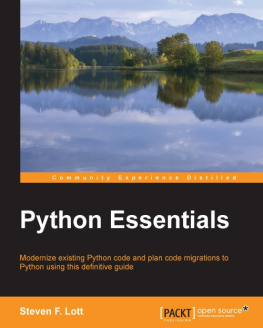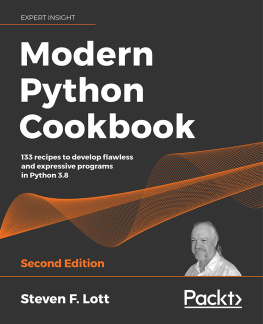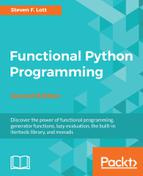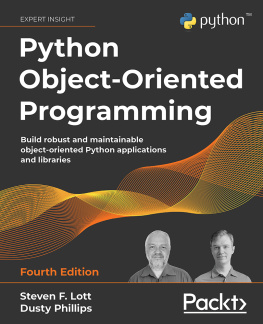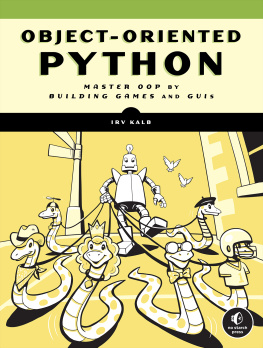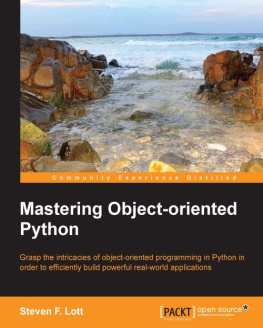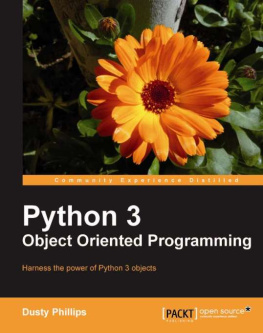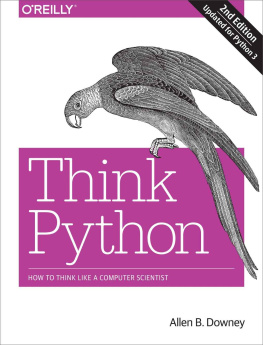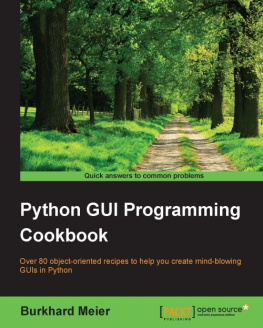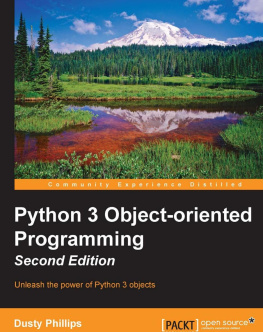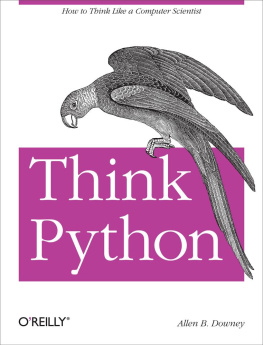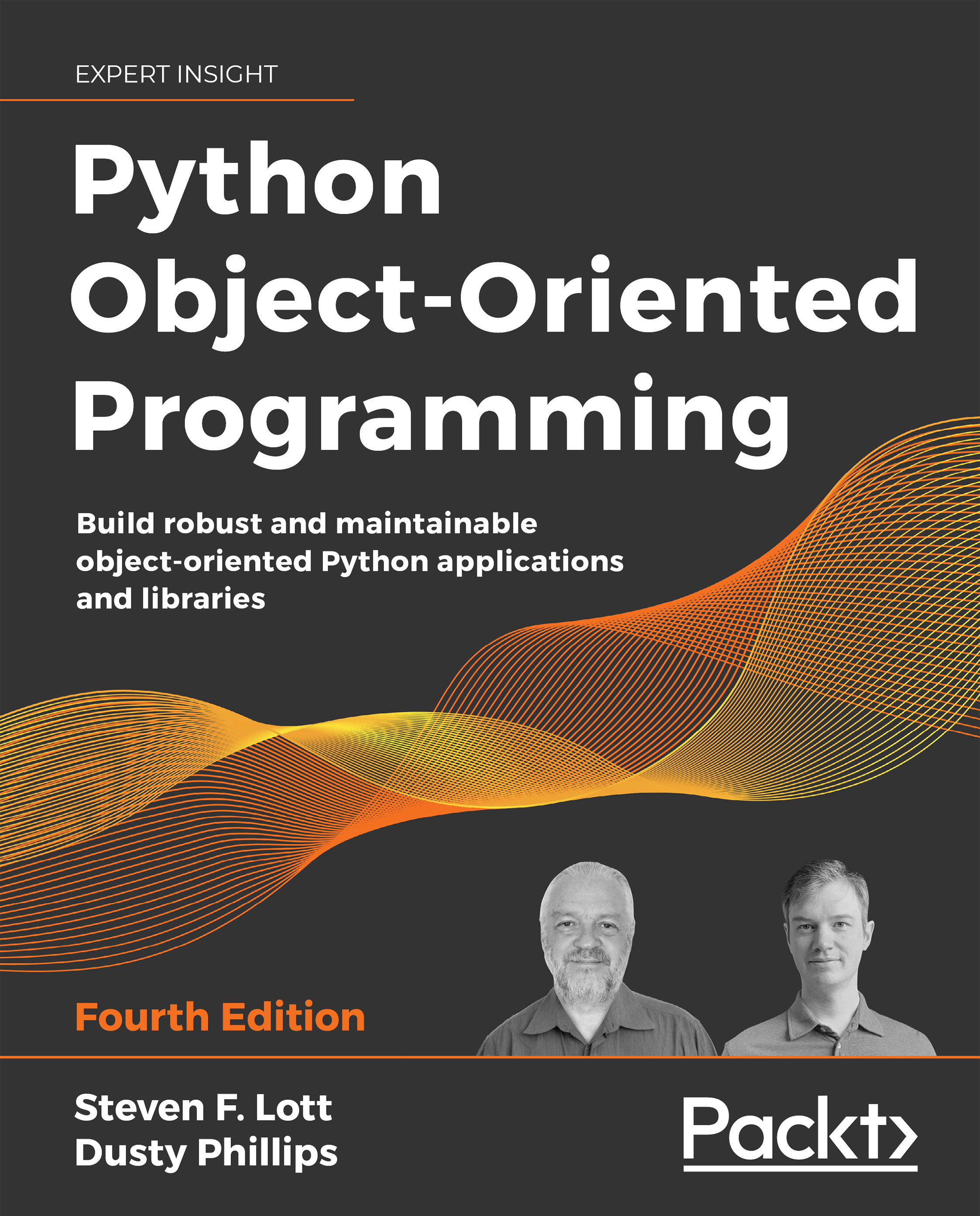Steven F. Lott - Python Object-Oriented Programming: Build robust and maintainable object-oriented Python applications and libraries
Here you can read online Steven F. Lott - Python Object-Oriented Programming: Build robust and maintainable object-oriented Python applications and libraries full text of the book (entire story) in english for free. Download pdf and epub, get meaning, cover and reviews about this ebook. year: 2021, publisher: Packt Publishing, genre: Home and family. Description of the work, (preface) as well as reviews are available. Best literature library LitArk.com created for fans of good reading and offers a wide selection of genres:
Romance novel
Science fiction
Adventure
Detective
Science
History
Home and family
Prose
Art
Politics
Computer
Non-fiction
Religion
Business
Children
Humor
Choose a favorite category and find really read worthwhile books. Enjoy immersion in the world of imagination, feel the emotions of the characters or learn something new for yourself, make an fascinating discovery.

- Book:Python Object-Oriented Programming: Build robust and maintainable object-oriented Python applications and libraries
- Author:
- Publisher:Packt Publishing
- Genre:
- Year:2021
- Rating:4 / 5
- Favourites:Add to favourites
- Your mark:
Python Object-Oriented Programming: Build robust and maintainable object-oriented Python applications and libraries: summary, description and annotation
We offer to read an annotation, description, summary or preface (depends on what the author of the book "Python Object-Oriented Programming: Build robust and maintainable object-oriented Python applications and libraries" wrote himself). If you haven't found the necessary information about the book — write in the comments, we will try to find it.
A comprehensive guide to exploring modern Python through data structures, design patterns, and effective object-oriented techniques
Key Features- Build an intuitive understanding of object-oriented design, from introductory to mature programs
- Learn the ins and outs of Python syntax, libraries, and best practices
- Examine a machine-learning case study at the end of each chapter
Python Object-Oriented Programming, Fourth Edition dives deep into the various aspects of OOP, Python as an OOP language, common and advanced design patterns, and hands-on data manipulation and testing of more complex OOP systems. These concepts are consolidated by open-ended exercises, as well as a real-world case study at the end of every chapter, newly written for this edition. All example code is now compatible with Python 3.9+ syntax and has been updated with type hints for ease of learning.
Steven and Dusty provide a friendly, comprehensive tour of important OOP concepts, such as inheritance, composition, and polymorphism, and explain how they work together with Pythons classes and data structures to facilitate good design. UML class diagrams are generously used throughout the text for you to understand class relationships. Beyond the books focus on OOP, it features an in-depth look at Pythons exception handling and how functional programming intersects with OOP. Not one, but two very powerful automated testing systems, unittest and pytest, are introduced in this book. The final chapter provides a detailed discussion of Pythons concurrent programming ecosystem.
By the end of the book, you will have a thorough understanding of how to think about and apply object-oriented principles using Python syntax and be able to confidently create robust and reliable programs.
What you will learn- Implement objects in Python by creating classes and defining methods
- Extend class functionality using inheritance
- Use exceptions to handle unusual situations cleanly
- Understand when to use object-oriented features, and more importantly, when not to use them
- Discover several widely used design patterns and how they are implemented in Python
- Uncover the simplicity of unit and integration testing and understand why they are so important
- Learn to statically type check your dynamic code
- Understand concurrency with asyncio and how it speeds up programs
If you are new to object-oriented programming techniques, or if you have basic Python skills and wish to learn how and when to correctly apply OOP principles in Python, this is the book for you. Moreover, if you are an object-oriented programmer coming from other languages or seeking a leg up in the new world of Python, you will find this book a useful introduction to Python. Minimal previous experience with Python is necessary.
Table of Contents- Object-Oriented Design
- Objects in Python
- When Objects Are Alike
- Expecting the Unexpected
- When to Use Object-Oriented Programming
- Abstract Base Classes and Operator Overloading
- Python Data Structures
- The Intersection of Object-Oriented and Functional Programming
- Strings, Serialization, and File Paths
- The Iterator Pattern
- Common Design Patterns
- Advanced Design Patterns
- Testing Object-Oriented Programs
- Concurrency
Steven F. Lott: author's other books
Who wrote Python Object-Oriented Programming: Build robust and maintainable object-oriented Python applications and libraries? Find out the surname, the name of the author of the book and a list of all author's works by series.

